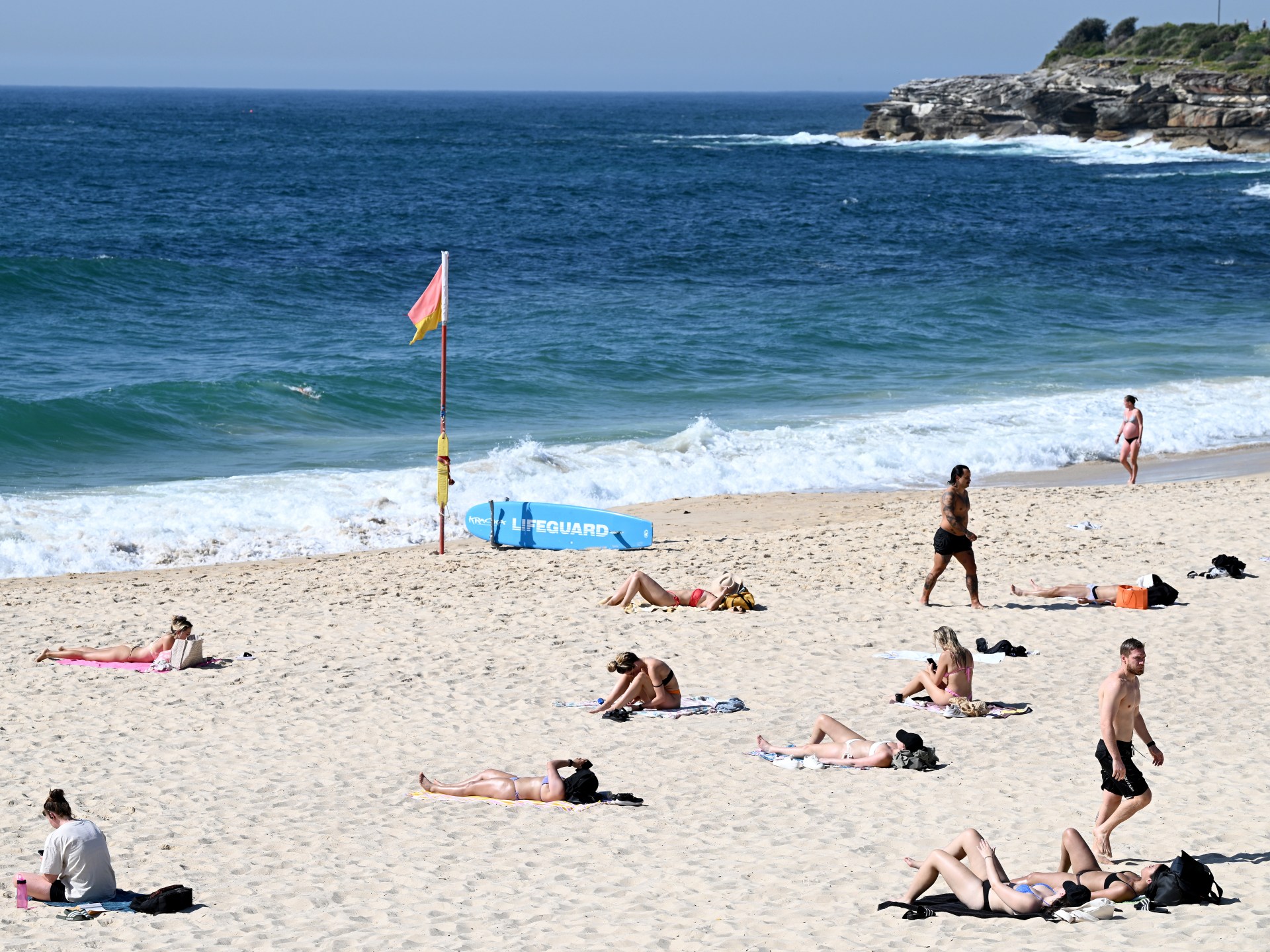New South Wales has recorded temperatures as much as 16C (60F) above the September average in recent days.
Authorities in southeastern Australia have issued a “total fire ban” amid an unusual September heatwave that has sent temperatures soaring.
The fire ban, the first in three years, comes as the state of New South Wales (NSW) records temperatures as much as 16C (60F) above the September average.
Temperatures in Sydney, Australia’s most populous city, reached 34.4C (93.9F) on Tuesday, just short of the all-time September record of 34.6C (94.3F), set in 1965.
Some 61 bushfires had been reported across NSW as of Tuesday morning, with 13 still to be contained, authorities said.
“Due to stronger than forecast winds along the far South Coast, catastrophic fire danger is expected this afternoon in the region,” the NSW Rural Fire Service said in a statement.
“These are the most dangerous conditions for a fire.”
Forecasters say temperatures are expected to remain high on Wednesday with the strong winds creating some of the riskiest bushfire conditions since the end of 2019 when fires swept through southeastern Australia killing native animals and destroying vast tracts of forest and thousands of rural homes.
“We’re in for a tough couple of days, and we need the community to be very vigilant,” NSW Rural Fire Service Commissioner Rob Rogers told Nine’s Today programme.
Twenty-one schools in NSW, mostly along the state’s southern coast, have been closed because of the danger of fire.
Sydney Harbour was last week shrouded in smoke as firefighters on the city’s fringes lit controlled blazes in an attempt to limit the risk of bushfires ahead of what is expected to be a hot and dry summer in the southern hemisphere.
Forecasters have said there is a high chance of an El Nino, which generally causes drier conditions in Australia.
The Bureau of Meteorology has warned the phenomenon could develop in the next couple of months and could cause extreme weather events from wildfires to cyclones and droughts.
The September heatwave is expected to break with the arrival of a cold front on Wednesday when temperatures will drop back to the low 20s.
Since the so-called Black Summer bushfires ended in March 2020, Australia has had a series of wetter, cooler summers.
